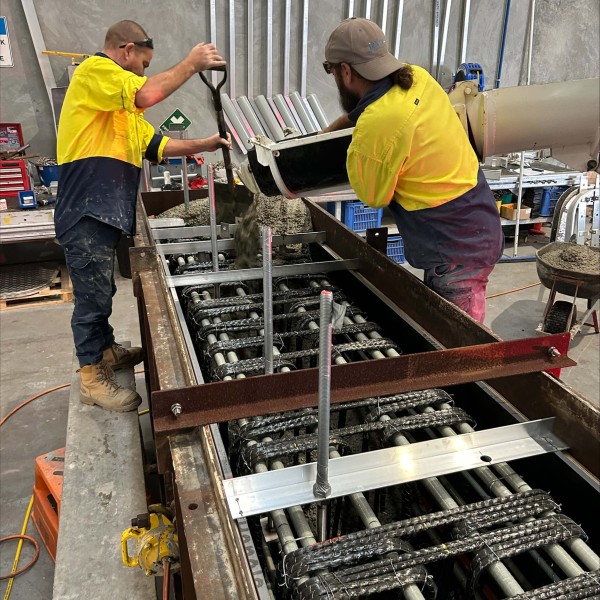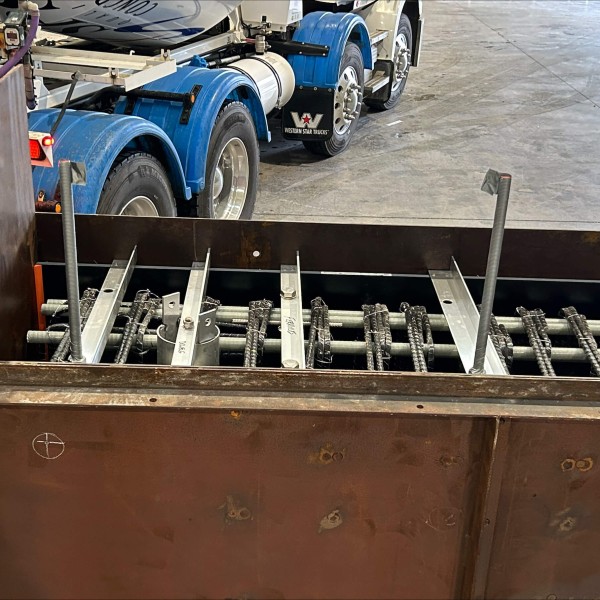The Harold Walker Jetty reconstruction project in Dunwich, North Stradbroke Island, represents a significant leap forward in sustainable marine infrastructure. Tasked with replacing the original 35-year-old jetty, which was closed in June 2020 due to severe steel corrosion, the project team sought an innovative, long-lasting solution.
This decision underscores a growing industry shift towards GFRP reinforcement in marine environments, where traditional steel reinforcement is highly susceptible to saltwater-induced corrosion, leading to premature structural failure.
Why Mateenbar™ GFRP rebar was used
The Queensland Department of Transport and Main Roads chose Mateenbar™ GFRP for its unmatched durability in aggressive marine environments. Unlike conventional steel reinforcement, which succumbs to chloride-induced corrosion, GFRP rebar is completely immune to saltwater damage, eliminating a major failure mode that plagued the previous structure.
Key Benefits of GFRP Rebar:
- Corrosion-Free: Withstands exposure to saltwater without degradation
- Extended Asset Lifespan: 100-year design life with zero maintenance
- Lightweight: 75% lighter than steel, making handling and installation easier
- Reduced Concrete Cover Requirement: Enables a lighter, more efficient structure
- Sustainable Construction: Lower embodied energy and reduced carbon footprint
Design & Construction with GFRP Rebar
The new Harold Walker Jetty integrates Mateenbar™ GFRP rebar throughout both the 10x4.5m fishing platform and its supporting structure, ensuring a high-strength, corrosion-resistant foundation.
Simplified Handling & Installation
Due to its lightweight properties, GFRP rebar significantly eased precasting and on-site construction. Unlike steel rebar, which is cumbersome and prone to rust, Mateenbar™ rebar's flexibility and lightweight nature streamlined the placement process for contractors, improving efficiency and safety on-site.
Moreover, using GFRP rebar allowed for a reduced reinforcement cover, leading to a lighter overall structure while maintaining optimal performance. While the direct weight-saving benefits of GFRP rebar are substantial, the real advantage comes from concrete optimization, allowing for less material usage without compromising structural integrity.
Long-Term Impact and Sustainability
Beyond its immediate construction benefits, the Harold Walker Jetty project sets a new standard for sustainable marine infrastructure.
- Zero Maintenance Costs: Eliminating corrosion translates to massive savings in upkeep and repairs.
- 100-Year Design Life Cycle: Outlasting traditional steel-reinforced structures by decades.
- Reduced Carbon Footprint: By reducing concrete usage and eliminating steel rebar, the project aligns with modern sustainability goals.
The Queensland Government’s decision to incorporate Mateenbar™ GFRP into this jetty replacement is a forward-thinking move that demonstrates a commitment to future-proofing community infrastructure while embracing innovative materials that deliver better durability, cost efficiency, and environmental responsibility.
The Best Fiberglass Rebar for Marine Structures
The Harold Walker Jetty Replacement serves as a pioneering example of how marine infrastructure can benefit from advanced composite materials. This project highlights the potential for fiberglass rebar to reshape the way coastal construction projects are designed and executed worldwide.
With its proven resilience, economic benefits, and sustainability advantages, Mateenbar™ fiberglass rebar stands at the forefront of next-generation construction solutions—ensuring that marine structures stand the test of time, without the burden of corrosion-related failures.

